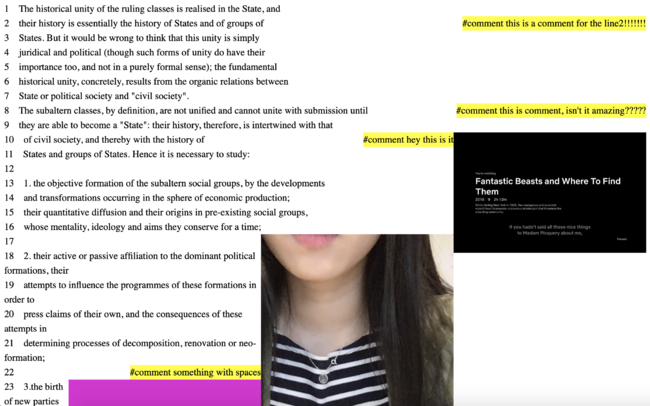User:Zpalomagar/RW&RM 2
Introduction The Network we (de)Served
The Infrastructour recalls a time in which networks became more familiar to me. It took some time to understand what the meaning of having a server at home is. In the installation moment, I discovered new utilities of my router, my provider company, my server, etc. At this time, I felt that I started to have a better understanding of my network topology. We started the server installation process looking for the physical conditions that this small machine needed, such as direct connection with the router and power supply. Once we had solved these logistic issues we accessed the router (through the default password I had found some days before) via my laptop and we set the server configuration to make it work online. I also discovered that I was able to host another person’s server. Biyi’s server was hosted in my router for some weeks with a parallel structure to mine, so I was able to control the configuration of both our servers. I found myself in control of the conditions of the networks that others were in.
When we installed the server we configured the local and public IP (that we would identify later with a domain name) opening the proper ports to manage it. We had some problems originating in the lack of a user-friendly interface, and limited freedom provided by my ISP. Once we managed to have a public IP for both of our servers we had created a public self-hosted node, so we were able to publish everything through the internet hosting it all ourselves.
At this moment I knew that I had the power to define my own rules and restrictions. I didn’t have any filter between me and my publication ambitions. I felt really responsible for the content that I could make public. We are used to utilizing external platforms to host our material. When we do that, we accept their rules and conditions but when we host it ourselves we are the ones establishing our own guidelines.
Our first networked activity was to build a ring between our servers. This action made me conscious of the real connection between the users of our network: Xpub1. Through this ring, we could navigate between our webpages, defining an interrelated connection among users.
In parallel, we started having a strong theoretical approach to network topology where I started to come across concepts like centralization, agency, link, virtual communities, bot, user, synergy and collaboration… As an architect, I have worked with visual concepts that I've always found easier to assimilate and understand. So, I started to research networks that define the connections between users through visual material.
At this point, crowd-sourced and collaborative projects became a good mirror of graphic networks (and networks in general). There, one can find these concepts of centralization, rules and community-making having a real reflection in a graphic creation. In order to have an active experience of these types of networks, I thought of developing several drawing experiments with Xpub1, where the levels of agency, synergy, and centralization would change depending on who determines the users that are going to participate. Who establishes the rules, and how do the users interact? This experiment would help us understand which consequences influence the participant's behavior if we transform the nature of their network, which is built on a specific project, and how these changes affect the visual collaboration.
Graphic Networks
What
This research has focused on the graphic communities that are built through collaborative initiatives where the users became active producers or creators of a bigger visual action or project.
The common link between these networks is that each user or participant has a graphic contribution in order to create a crowd-sourced visual element. The user is not usually the owner of this complete project but is the owner of a small part of it that represents its position in the global network. Sometimes the user can become to be more powerful forming small communities in the network with a specific goal. The graphic result is a radiography of the users that have created it and therefore are an active part of the network.
How
In order to have an active experience on this type of networks several experiments are going to be developed with the xpub community where the levels of agency, synergy, and centralization are going to be changed trying to understand which are the consequences for the participant behavior when we transform the nature of their network that is built to develop a specific project and how are these changes reflected on the visual result.
Why
This research was trigger from the concept of centralization, agency, and synergy that we can find in every network that we use and how can we understand them through the visual material that is produced in a graphic collaborative network.
A graphic network reaches its higher centralization level when a curator defines deliberately the users that are going to participate in defining the community that is going to be formed. On the other hand, a graphic network has its lower centralization level when neither users nor the curator decides who is going to be part of this project. This is visible in the result of the common creation that this community develop so we can have a visual understanding of the centralization aspect of a certain network.

